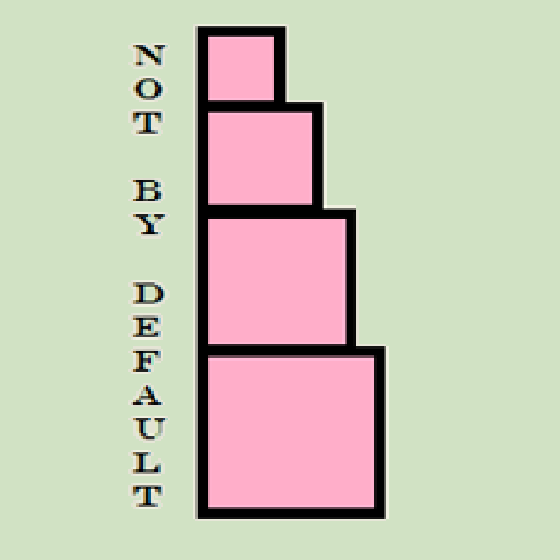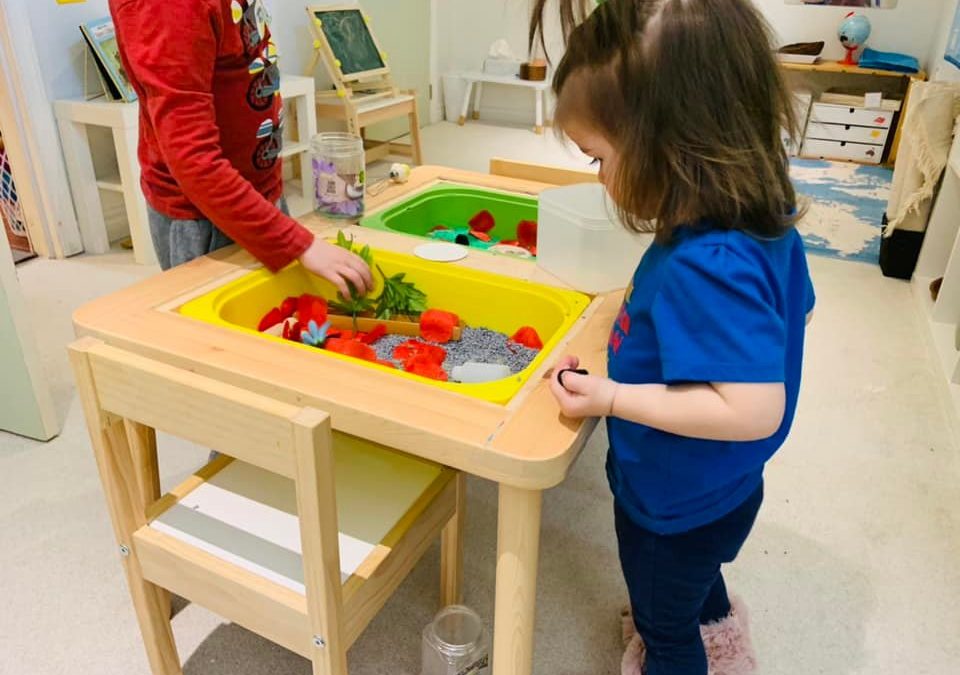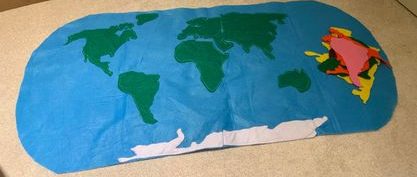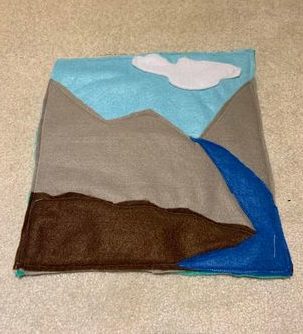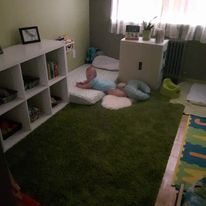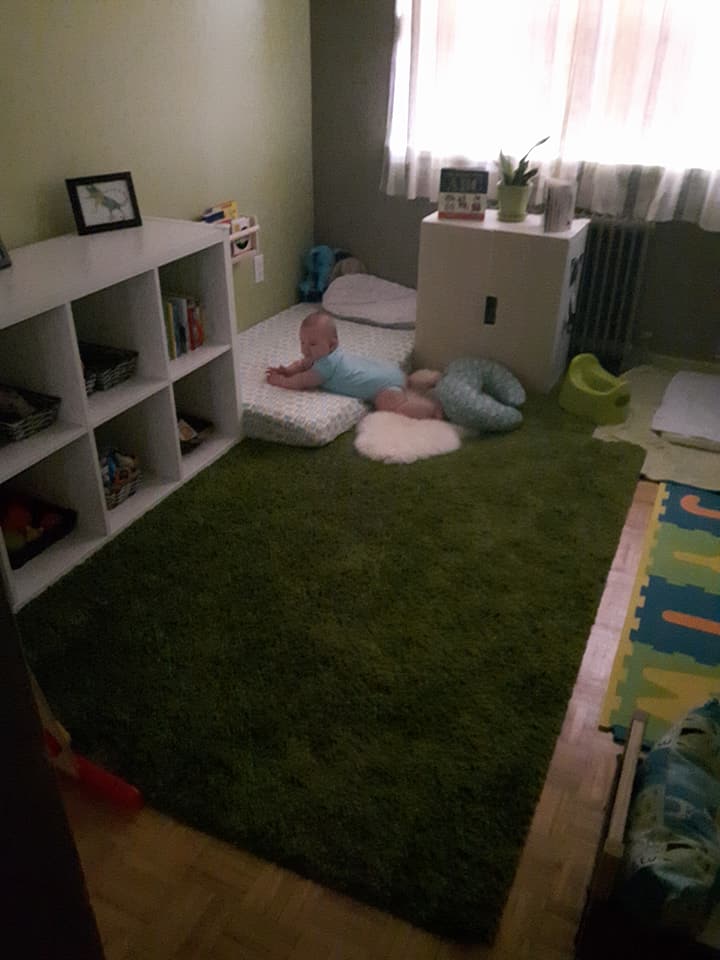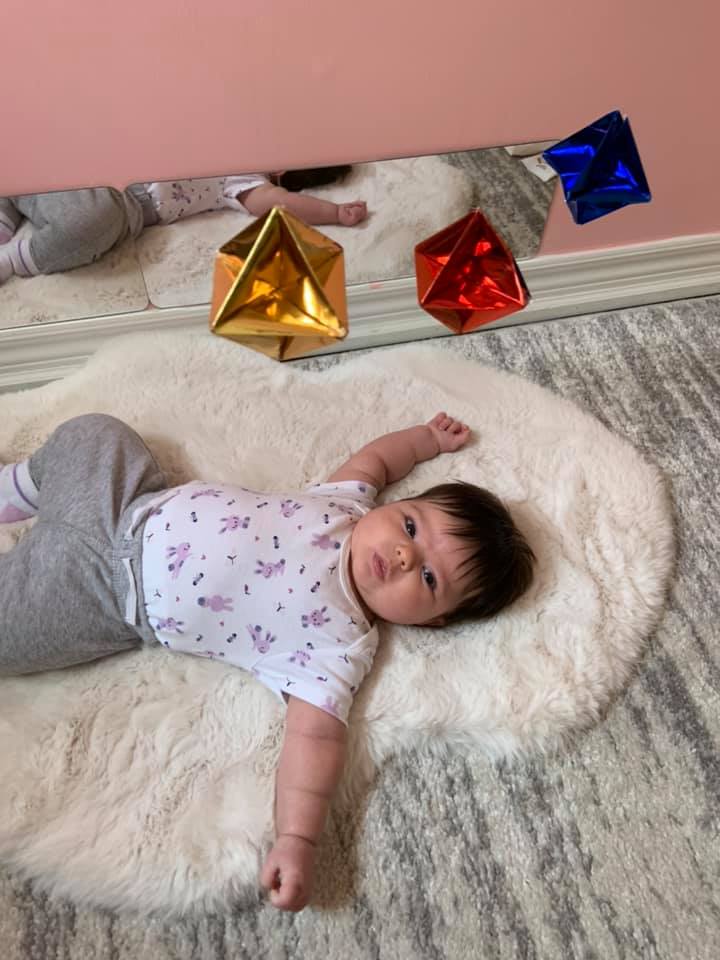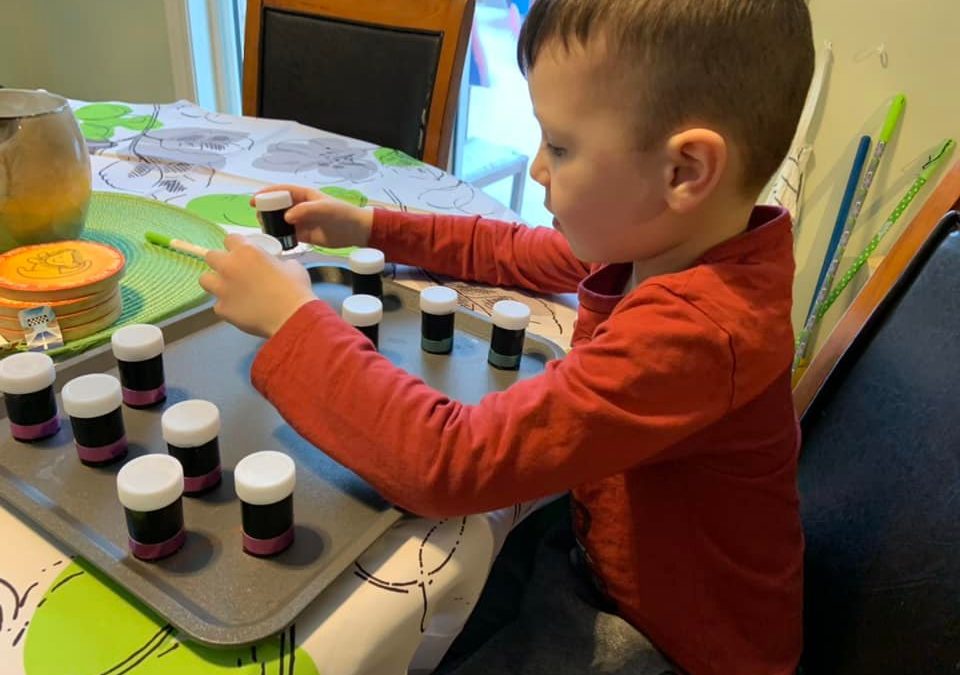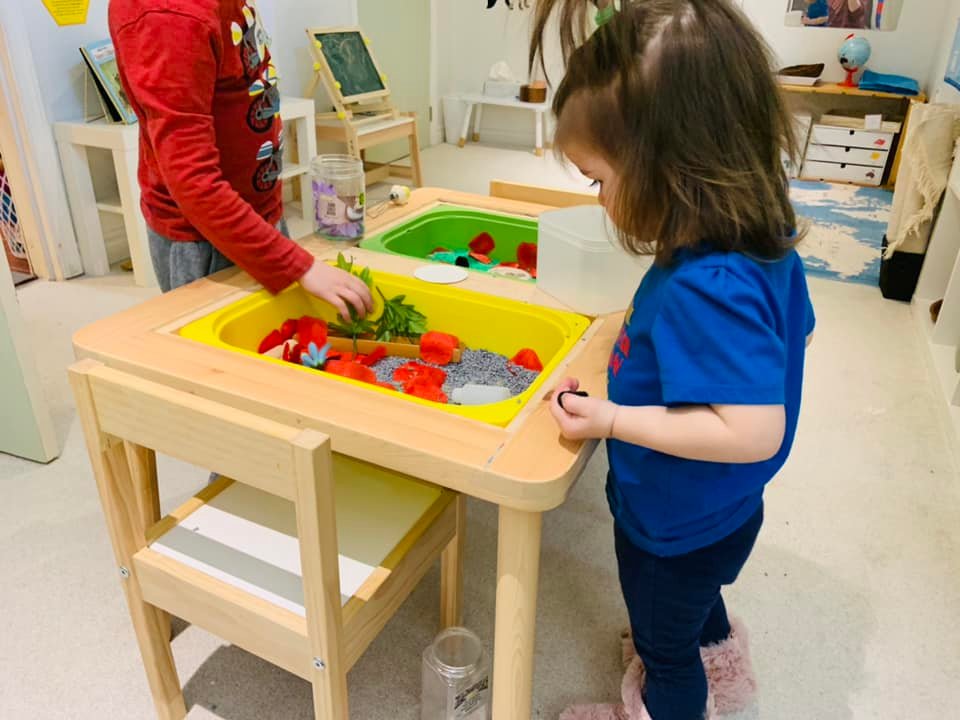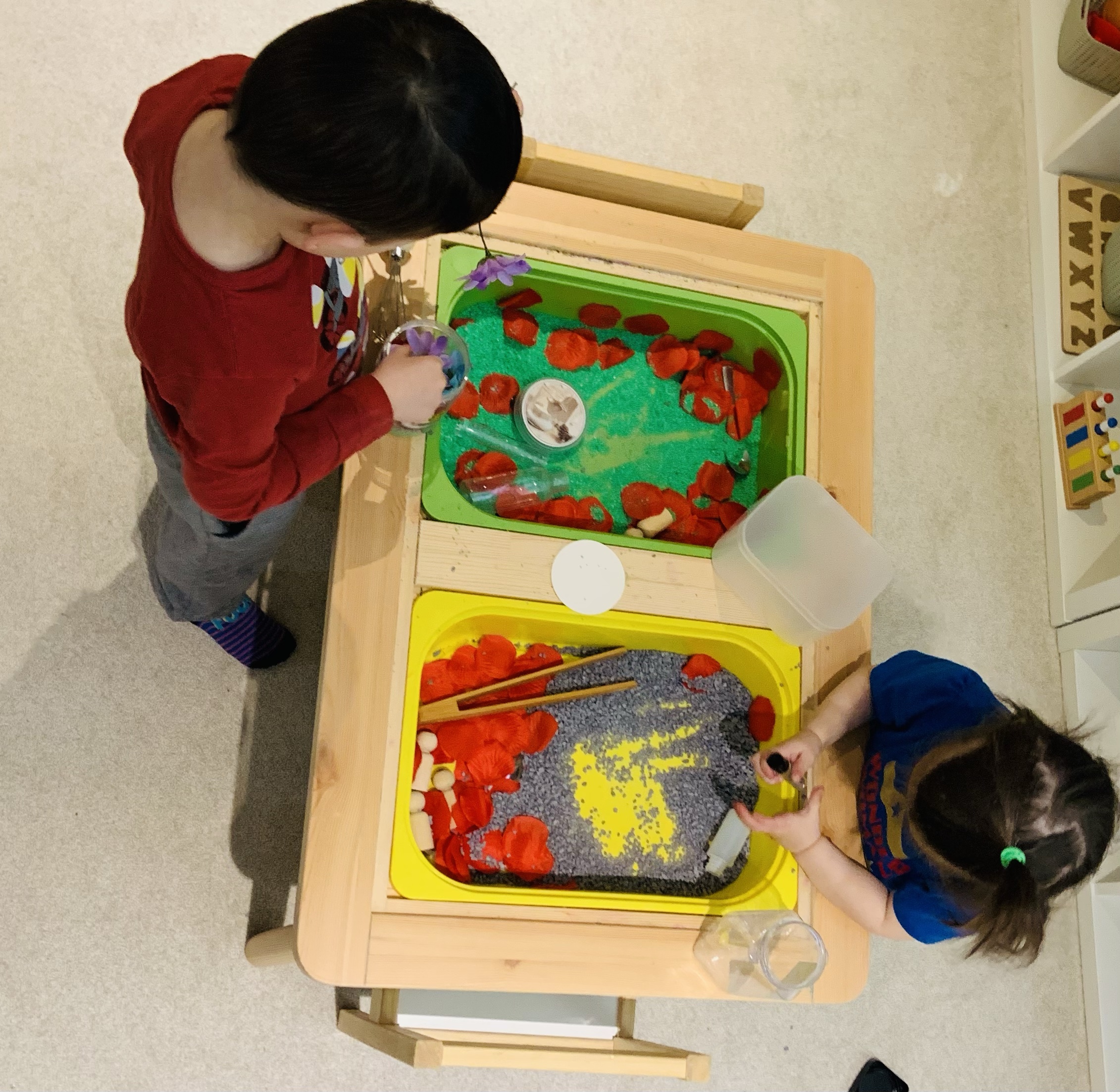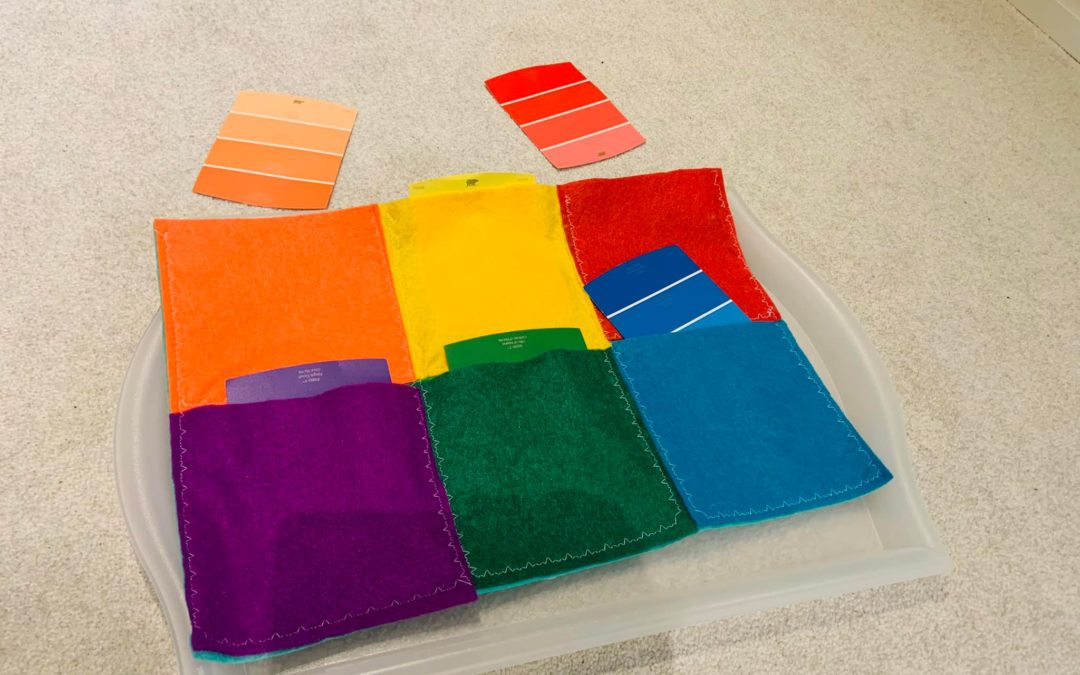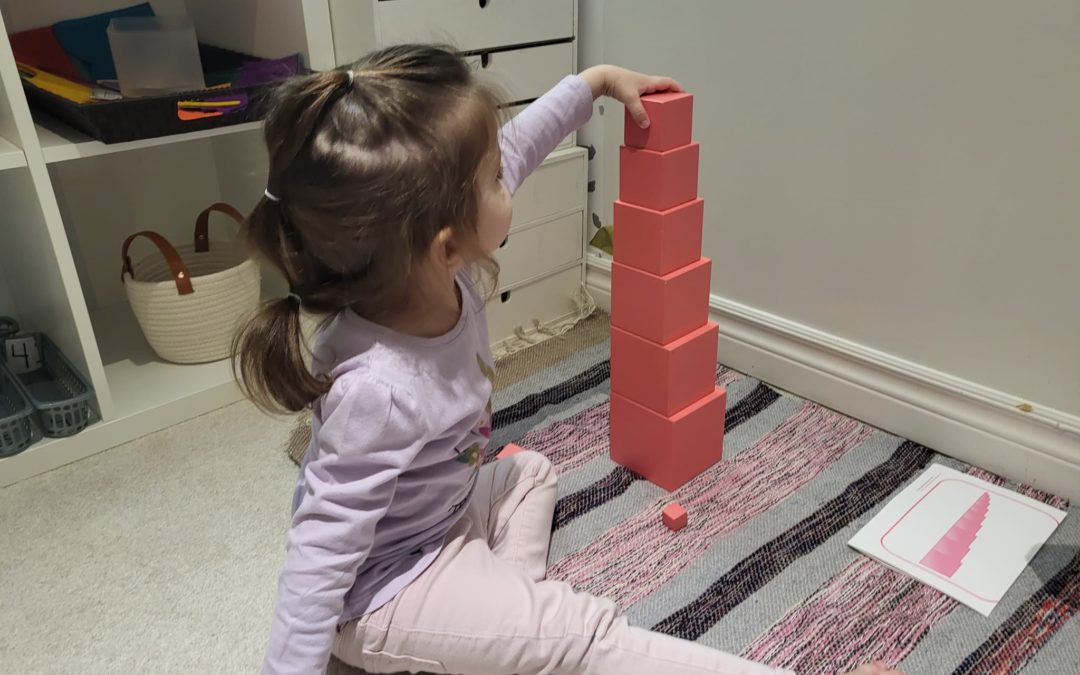
The Pink Tower

So to start, what is the Pink tower and what does it do? It is one of Maria Montessori’s sensorial materials. It is used to teach visual discrimination of size. Like me you may think oh great, I can use any nesting blocks and they would function in a similar way. However there is much more to the pink tower than just size discrimination! Firstly when you pick up the largest block of the tower you will notice right away that is has quite a bit of weight to it. It weighs much more than the smaller blocks in the set. The blocks do not only differ in size, they differ in weight in a way that is very noticeable. Much more so than with hollow nesting blocks. When a young child carries the blocks to their workspace they can feel the difference in size as much as they can see it. The size differences is also significant. They do not just become gradually smaller. The smallest block is 1 cm where the largest block is 10 cm. A child can check if their work with the Pink tower is correct by placing the smallest cube upon each level of the tower and seeing if it fits. The pink tower is an exact match in size to the brown stairs so the materials can be used together. This material also is an indirect introduction to some math concepts that the child will use later in their education such as the decimal system! My point is that painting a nesting blocks set pink simply will not recreate this material and it will not be useful in the long term.
So I moved on to trying to decide if I could make it myself with solid wood. I considered this for a long while, and my husband and I discussed how we would do it and what tools and materials we would need. We quickly realized that we were not equipped for the precise nature of this material and it would be no easy feat with our limited resources. At this point we decided that we would purchase the material if we deemed it necessary.
We bought it for the children last year for Christmas. They were drawn to it immediately. My then four year old commented that he loved feeling the blocks. He couldn’t express what about them appealed to him but I believe it was the weight as he often picks up and admires the largest block in the series. However as much as he admires it, he never uses it. He compared the different cubes to other materials that he realized matched exactly such as the brown stairs and the table of Pythagoras. Then after the satisfaction of those discoveries ignored the tower forevermore. Little Miss who is two and a half and closer to the correct age the tower was designed for finds much more joy from the tower. Nearly every day she constructs the tower, says to herself, “I did it” and returns it to the shelf. Every time we tidy the playroom she ensures that the tower is properly arranged and most days points out that its pretty, or it looks just right. She adores the pink tower. It will be interesting to see how much use the tower receives in the next year as Little Miss gets older and starts to receive introductions to other materials in our homeschool inventory. I am excited to see her make the connections that her brother did in a more graduated way, as she is not previously familiar with the materials as he was when we purchased the tower.
My final review is this. If you want the Pink Tower then purchase it early on. Any diy will be expensive and challenging. If you wait to purchase your child likely will not get too much use from it. As always if your child attends a Montessori school avoid purchasing any of the materials as it may be confusing, and is unnecessary. However if you homeschool like me, then the Pink Tower is a beautiful addition. Not mandatory, but lovely nonetheless.
